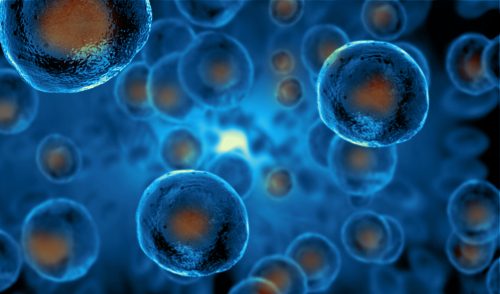The stem cell revolution marches on with multiple uses and startling results

As reported in the Daily Mail the stem cell revolution may prove to be as, “significant as antibiotics and organ transplantation”.
In a major piece of reporting Daily Mail journalists, Jo Waters meets four people whose lives have been transformed by various applications of stem cell technology; to treat Crohn’s disease; multiple sclerosis (MS);
Jo Waters writes; “Stem cells are the human body’s raw material for repairing itself. They can self-renew or turn into a specific type of cell, such as blood or muscle cells, and offer huge potential for treating a range of conditions, from worn-out knees to damaged hearts.”
“They are not all the same: embryonic stem cells, sourced from human embryos, can become any type of cell in the body; adult stem cells, which are harvested from (your own or donor) bone marrow or fat tissue have more limited use; and a third group called induced pluripotent stem cells are produced by reprogramming normal adult stem cells so they act like embryonic cells.”
Multiple sclerosis
Reema Sandhu, is an account manager, lives in Bracknell, Berkshire, with husband and young son. She was diagnosed with multiple sclerosis (MS) in November 2015 after burning her face on a lamp. She was unaware she was touching it as her cheek had gone numb. An MRI scan showed lesions on her brain and spine. A lumbar puncture confirmed MS — where the immune system attacks the protective fatty myelin sheath that surrounds nerves. It causes muscle spasms, stiffness, bladder problems and memory problems. I also had a rash and felt so tired.
After unsuccessful medical treatments and being rejected from clinical trials she raised £70,000 through savings, money from family and a GoFundMe website. Immediately brain fog improved and she could concentrate better. By the second month, her vision was back to normal and since then she has been able to go back to the gym, run after her son and even go to work. She still has spasticity in her right side but all the signs so far are that stem cells have halted the progression of her MS.
Repairing a failing heart
Dave Randle, 49, a tour bus driver for rock bands, lives in Willenhall, West Midlands, and had stem cell treatment after having a heart attack in March 2016. Having been fit and active, the heart failure he felt so weak that he could barely walk upstairs. If he lay flat, fluid would build up in his lungs and he would struggle to breathe.
After refusing a ventricular assist device (LVAD), a surgically implanted heart pump, his consultant warned him that he would be dead by Christmas that year.
After reading about stem cells for damaged hearts, his consultant said such treatment was years away so he rang the Heart Cells Foundation charity and after assessment it paid for him to have treatment at St Bart’s Hospital in London.
The stem cells were reinfused back into his heart and he started to feel better within weeks. Before he was preparing to die and now, instead, he is planning an 800-mile bike ride to raise money for others to have the treatment.
Cancer
George Norton, 37, a web content strategist, lives in Streatham, South London, with wife and son Emanuele. George was diagnosed with acute lymphoblastic leukaemia (ALL), a form of blood cancer, in 2005 and received a stem cell transplant in March 2014 after a relapse. He says:
When he relapsed doctors gave him only 30 per cent of surviving. It was devastating after getting married and restarting his career after being ill initially. He was put onto chemotherapy followed by immunotherapy with the aim of then having a stem cell transplant from a donor found through the Anthony Nolan charity, which runs a bone marrow donor register.
On the 100th day after treatment, his wife took him to Brussels on Eurostar for a celebratory lunch. His donor, Tim, who had registered as a donor at university was a similar age to me and lived nearby and they have since become godparents to each other’s children.
Crohn’s disease
Deepan Shah, 31, a telecoms engineer, who lives in Hounslow, West London tells Jo that after having Crohn’s disease since childhood, leaving him permanently fatigued and suffering from diarrhoea, cramping and mood swings. Aged 20 he had part of his bowel removed and a stoma bag attached to collect waste. Medicine never worked and his weight plummeted. He is 5ft 2inches tall so the disease also affected his growth.
In 2010 he began a trial at the Royal London Hospital testing stem cell as a way of rebooting the immune system. The treatment involved chemotherapy to destroy faulty immune cells and injections of growth factors to make stem cells in bone marrow spill out into the blood stream. He still has Crohn’s, but can lead a normal life. His body now reacts to medication and his condition can be treated.
This piece was first published in its original form at https://www.dailymail.co.uk/health/article-7674229/Patients-reveal-reaped-remarkable-benefits-stem-cells.htm
